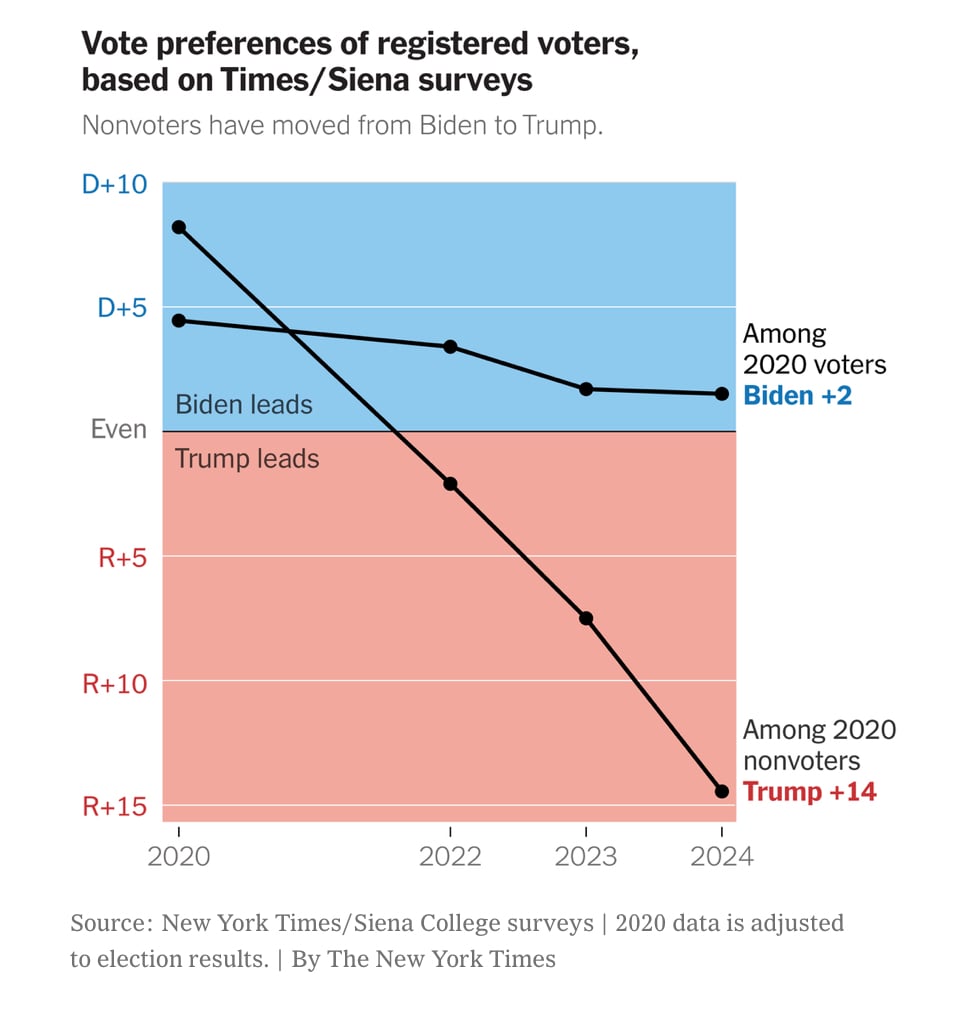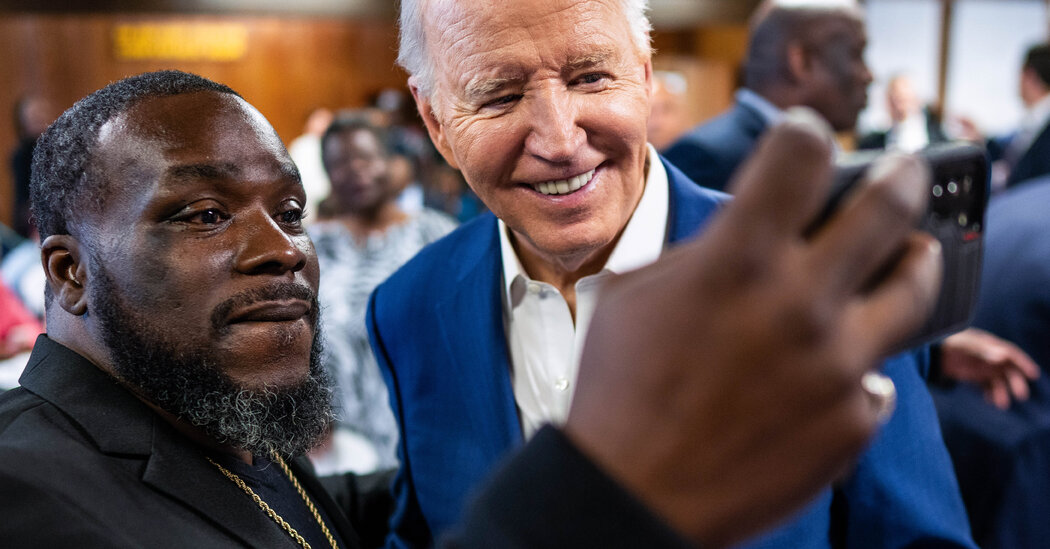The polls have shown Donald Trump with an edge for eight straight months, but there’s a sign his advantage might not be quite as stable as it looks: His lead is built on gains among voters who aren’t paying close attention to politics, who don’t follow traditional news and who don’t regularly vote.
Disengaged voters on the periphery of the electorate are driving the polling results — and the story line — about the election.




Interjecting to add my two pennies. Gen z isn’t as consequential here as millennials, (not that they answer unknown numbers.) Young people simply don’t vote.
Edit: For the record I’m a xennial and don’t answer those calls either.
They don’t vote as much as older people, but they’re not an irrelevant population. 51% of eligible 18-24 year old voters voted in 2020. That’s 13.7M votes or 8% of the total. And they vote heavily Democratic. 51% for 18-24 vs a 71% turnout for 45-64 is disappointing, sure, but not remotely irrelevant. We have endless think pieces about Latino/Latinx voters deciding elections, and they were only 16.5M votes. No one would ever say “ignore them, they’re irrelevant”.
Youth voting rose 8 percentage points between 2016 and 2020, and look how things changed. No demographic group is small enough to ignore, because elections are decided in the margins of a few critical states.
With inflation your opinion is now 24¢, please insert one quarter.